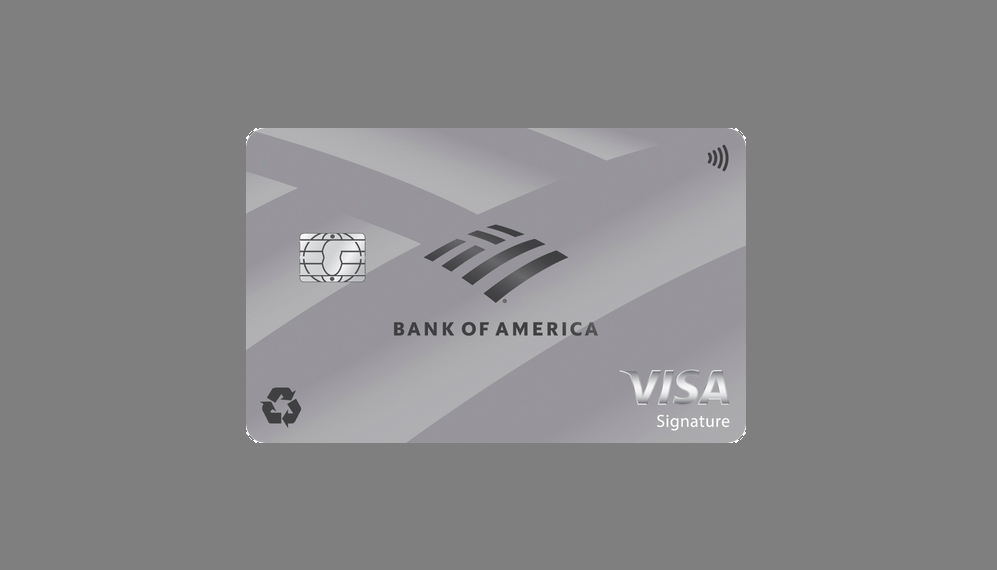The Future of Credit Cards: Sustainability and Digital Payments

Understanding the Future of Credit Cards
As we navigate an increasingly complex financial landscape, it is clear that credit cards are not just tools for spending; they are evolving to reflect the priorities and values of modern consumers. With a growing emphasis on technology and environmental responsibility, today’s credit cards are poised to become much more than convenient payment methods.
One of the most significant trends shaping the future of credit cards is sustainability. Many companies are now prioritizing eco-friendly materials in their card production processes. For instance, some credit card issuers are designing cards made from recycled plastics or biodegradable materials. This shift not only aids in reducing the carbon footprint of manufacturing but also appeals to environmentally conscious consumers. By choosing a card that is produced sustainably, users can feel good about their impact on the planet while still enjoying the benefits of credit.
In tandem with sustainability is the trend towards digital payments. The popularity of contactless payments, mobile wallets, and online transactions has surged in recent years, particularly in the wake of the COVID-19 pandemic. For example, many consumers now prefer using services like Apple Pay or Google Wallet, which allow them to make transactions simply by tapping their smartphones at payment terminals. This trend reflects a broader move towards convenience, speed, and security in financial transactions. As technology continues to advance, we can expect even more innovative payment options that integrate seamlessly into our daily lives.
Another important aspect of the evolving credit card landscape is customization. Today’s consumers seek personalized experiences that cater specifically to their spending habits and preferences. Credit card companies are responding by offering tailored reward programs, where users can earn points more suited to their interests, whether that be travel, dining, or cashback on everyday purchases. For instance, a frequent traveler might benefit from a credit card that offers bonus points for airline tickets and hotel stays, while someone who loves dining out would prefer rewards related to restaurants. This level of personalization not only enhances customer satisfaction but also fosters brand loyalty.
The integration of sustainability, technology, and customization is redefining how we think about credit cards. Consumers now have access to tools that not only promise convenience and security but also align with their ethical values and lifestyles. Being aware of these trends allows consumers to make informed decisions about their financial tools, ensuring they choose options that support both their personal goals and the well-being of the planet.
LEARN MORE: Click here to discover how to apply
The Role of Sustainability in Credit Card Innovation
As consumers become more environmentally aware, the push for sustainable practices within all industries, including financial services, is stronger than ever. Credit card companies are taking this challenge to heart. A significant step in this direction is the move towards using sustainable materials in card production. Traditional credit cards are often made from polyvinyl chloride (PVC), a plastic that is challenging to recycle and poses environmental risks. In contrast, many newer cards are being produced from recycled plastics and even biodegradable materials, which significantly reduce their environmental impact.
For instance, several major banks in the United States have begun issuing cards made from at least 85% recycled materials. This initiative not only conserves resources but also encourages customers to feel that their financial choices are making a positive impact. Consumers can now choose to support brands that align with their values, and this choice can enhance their loyalty to these companies.
Furthermore, the concept of sustainability in credit cards goes beyond the materials used. Some financial institutions are taking this a step further by implementing programs that promote carbon reduction. For example, a credit card issuer might plant a tree for every card activated or for every certain amount spent, allowing cardholders to contribute positively to the environment with their purchases.
Digital Payments: Convenience Meets Security
Alongside sustainability, digital payment systems are reshaping the credit card landscape. The shift towards mobile wallets and contactless payments is not just a trend; it’s quickly becoming the norm. As consumers increasingly seek quicker, safer, and more efficient payment methods, traditional plastic credit cards are evolving to meet these needs. Digital payment platforms such as PayPal, Venmo, and Apple Pay are gaining massive popularity, allowing individuals to make transactions simply using their smartphones. In fact, studies indicate that a growing percentage of consumers in the United States now prefer using mobile payment options over traditional cards due to their convenience.
This transition to digital payments offers numerous advantages:
- Speed: Transactions are completed in seconds, minimizing the time spent at checkout lines.
- Security: Advanced encryption and tokenization protect users’ financial data, making it more difficult for fraudsters to access sensitive information.
- User Experience: Mobile wallets often come with integrated budgeting tools and spending trackers that help users manage their finances better.
As technology continues to evolve, it is likely that we will see even more sophisticated payment solutions emerge. From integrating biometric authentication to using cryptocurrencies for everyday transactions, the future of credit cards and payments is immensely promising. This evolution not only reflects changing consumer behavior but also sets the stage for a more inclusive and sustainable financial ecosystem.
DISCOVER MORE: Click here to learn how to apply
The Intersection of Sustainability and Digital Innovation
As we navigate through an era where sustainability is paramount, the financial sector is beginning to explore how digital innovation can work hand-in-hand with eco-friendly practices. One such initiative lies in the enhancement of payment tracking and reporting through digital platforms. By providing customers with real-time insights into their spending habits and the carbon footprints associated with their purchases, financial institutions can empower consumers to make more conscientious decisions.
For example, some mobile banking apps are now integrating features that help users track their spending and CO2 emissions tied to their purchases. Not only does this education put consumers in control, but it also promotes responsible spending aligned with sustainability goals. Users can see how their daily expenditures impact the environment, prompting them to choose more sustainable options, such as selecting eco-friendly brands or opting for public transportation instead of driving.
Sustainable Rewards Programs
Another exciting development in the world of credit cards is the emergence of sustainable rewards programs. Traditionally, consumers would earn points or cashback that could be redeemed for travel, merchandise, or discounts. However, companies are now shifting these programs towards eco-centric rewards, which may include:
- Carbon credits: Allowing cardholders to redeem points for carbon offset initiatives.
- Charitable donations: Enabling users to contribute rewards points to environmental organizations.
- Eco-friendly products: Offering discounts on sustainably made products or services.
These programs not only incentivize sustainable behavior but also set a new standard for how loyalty can be built around environmental consciousness. By aligning spending with an eco-friendly mission, consumers may find deeper satisfaction in their purchasing decisions, further solidifying their loyalty towards responsible companies.
The Role of Education in Adoption
While a robust push towards digital payment systems and sustainability is evident, consumer education plays a crucial role in the adoption of these changes. It’s essential for financial institutions to inform their customers about the benefits of digital payments and sustainable financial products. This could involve educational campaigns through social media channels, webinars, or community workshops focusing on how to navigate digital payments safely and make informed choices about eco-friendly credit options.
Moreover, banks and payment providers must prioritize transparency regarding the environmental impact of their operations. By openly sharing data about the sustainability initiatives they are implementing, these institutions build trust with consumers, encouraging them to embrace new technologies and products. The rise of online reviews and social media commentary has made it easier for consumers to research the ecological footprint of their chosen credit card, making transparency an indispensable part of modern banking.
In summary, the future of credit cards lies at the crossroads of sustainability and digital payments. As consumers continue to demand change, financial services must evolve, leveraging innovative technologies and sustainable practices to enhance the overall financial experience. With ongoing developments in materials, payment systems, and rewards, we can look forward to a more eco-conscious and connected financial landscape. The next generation of consumers will likely expect nothing less than a financial ecosystem that reflects their values and fosters a sustainable future.
DISCOVER: Click here to learn how to apply
Looking Ahead: The Sustainable Future of Credit Cards
As we contemplate the future of credit cards, it is evident that sustainability and digital payments are at the forefront of a transformative shift in the financial landscape. The integration of eco-friendly practices into the credit card industry not only aligns with the growing consumer demand for responsible choices but also reinforces the importance of environmental stewardship. As digital innovations bring about greater accessibility and convenience, financial institutions have a unique opportunity to educate consumers on responsible spending aligned with sustainability goals.
Moreover, the rise of sustainable rewards programs is reshaping how consumers perceive loyalty and value. By rewarding eco-conscious behaviors, these programs allow consumers to align their spending with their values, fostering a trusting relationship between them and their chosen financial institutions. This evolution sets a new standard for what it means to be a responsible consumer, emphasizing that our financial decisions can contribute to a healthier planet.
In conclusion, as digital payments become increasingly prevalent, the financial services industry must continue to innovate with sustainability in mind. Effective consumer education, transparency in operations, and an emphasis on sustainable practices will be pivotal as we move toward a future where financial products reflect environmental concerns and aspirations. The journey toward a more sustainable credit card ecosystem is not just an obligation but an opportunity to shape a financial future that resonates with the ideals and aspirations of the next generation, creating a business model that ultimately benefits both consumers and the planet.


